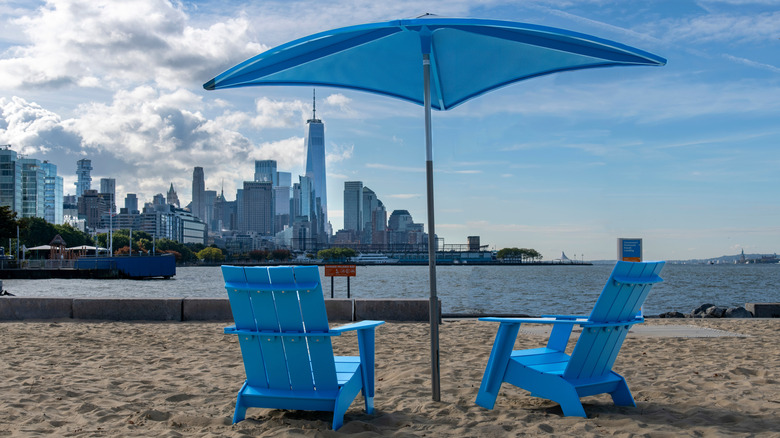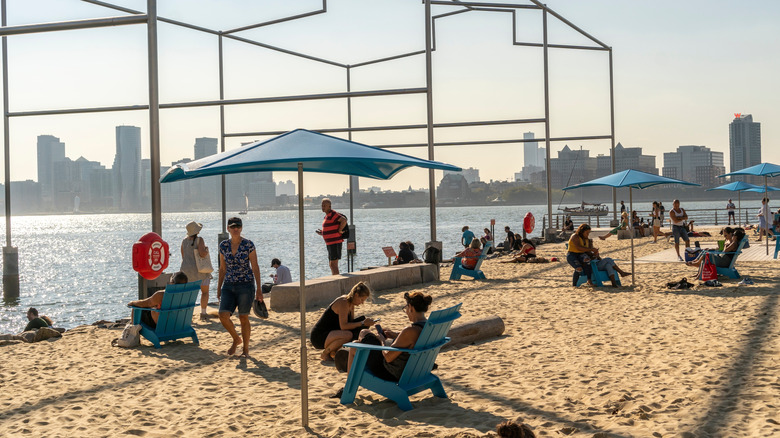Manhattan's Only Public Beach Is Free-To-Visit With Adirondack-Style Chairs On Luxe White Sand
It's hard to imagine a place as compact and busy as Manhattan having a public beach — New Yorkers typically escape the city hustle by enjoying the serene beauty of its hidden islands. Yet, right in the heart of the city's busiest island, in downtown Manhattan, there's a patch of powdery sand with blue beach umbrellas and Adirondack-style chairs looking over the Hudson River. The beach is part of the 5.5-acre Gansevoort Peninsula, where there's also a dog park, salt marsh, and turf-covered athletic field. It's hardly secluded from the city: With the West Side Highway flanking it, the beach is right in the thick of the fashionable Meatpacking District. But, given that it's public and free, it could make for the perfect place to unwind as a great budget-friendly outdoor activity in NYC.
The Gansevoort Beach opened in 2023, with a press release from New York state calling it "Manhattan's first public beachfront." Interestingly, the peninsula used to be just one segment of an entire strip of land that made up 13th Avenue, which no longer exists. The avenue was eventually dredged up to make room for boats to dock without blocking the main waterway, and Gansevoort Peninsula, a single block, is all that's left from the historic avenue. Given this length, the peninsula has much more space than other West Side piers, which is why it's been able to incorporate a beach, lawns, picnic area, boardwalks, and even misting stations. There's also access to the water for kayakers and other paddlers.
What to know about visiting Gansevoort Beach
If there's one major downside to Gansevoort Beach, it's that you can't swim. The beach was designed for lounging, not swimming, and, to be fair, you probably wouldn't want to swim in the Hudson River anyway. The peninsula is located near sewage overflow pipes which spill into the surrounding water, particularly after heavy rain.
Despite the urban waters, the peninsula is surprisingly diverse in terms of ecology. During low tide, you can see tide pools along the beach's southern shoreline, which harbor small sea critters like shrimp and crabs. Trace the boardwalk through the middle of the peninsula, and you'll cross through a pine grove. Then, at the northern edge, there's a salt marsh habitat with native grasses, reef balls, and over 20 million oysters. You might also want to bring binoculars, as the spot is becoming a hidden gem for birders — nearly 100 different birds have been sighted here and listed on Cornell's eBird database, including cedar waxwings, double-crested cormorants, and even a couple sandpipers.
Though some might be put off by being so close to the urban noise and skyline glare, for others, proximity is Gansevoort Beach's selling point. Upper West Side resident David Rosen told the New York Times, "[I]t took me 10 minutes to get here on the subway. Coney Island would take me an hour and a half." For travelers in the city, you can reach the Gansevoort Peninsula by way of the 14th St./8th Ave. stop that services the A, C, E, and L subway trains. From Grand Central Station, it takes about 30 minutes. Aside from the little beach, the neighborhood has lots to explore, including the High Line, New York City's most scenic trail that's also free.

